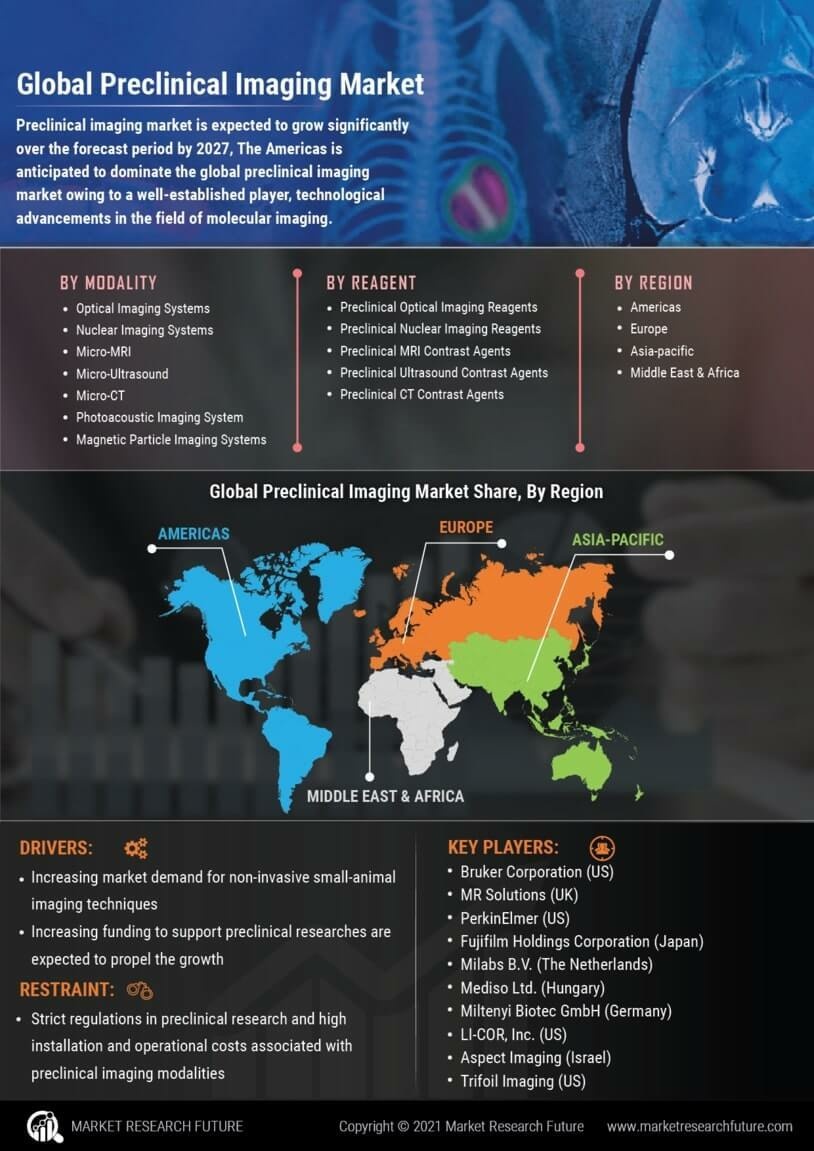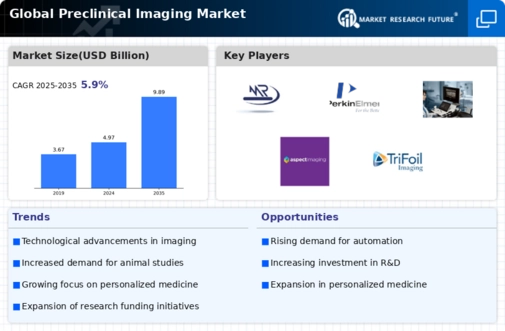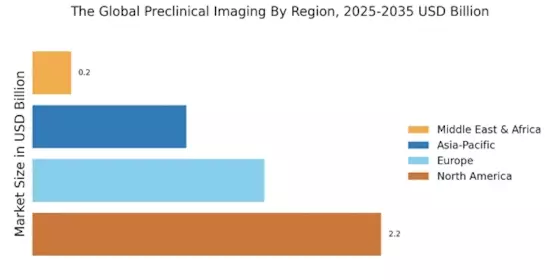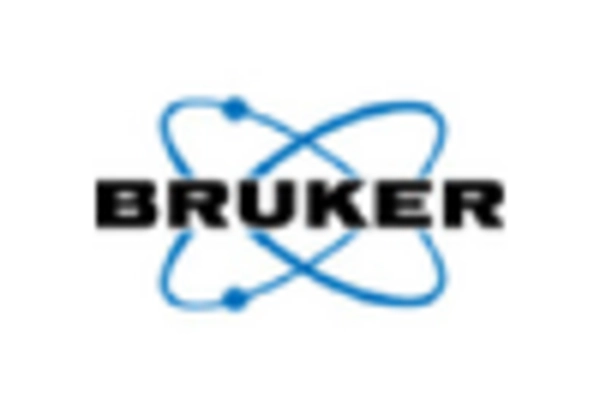Increased Focus on Personalized Medicine
The growing emphasis on personalized medicine is significantly influencing The Global Preclinical Imaging Industry. As the healthcare landscape evolves, there is a pressing need for tailored therapeutic approaches that cater to individual patient profiles. Preclinical imaging plays a crucial role in this paradigm shift by enabling researchers to assess the pharmacokinetics and pharmacodynamics of drugs in specific populations. The market is expected to benefit from this trend, with projections indicating a potential increase in market size driven by the need for imaging solutions that support personalized treatment strategies. By providing insights into how different patients respond to therapies, preclinical imaging technologies are becoming indispensable tools in the development of customized medical interventions, thereby fostering innovation and growth within the industry.
Rising Demand for Non-Invasive Procedures
The shift towards non-invasive imaging techniques is a notable driver in The Global Preclinical Imaging Industry. Non-invasive methods reduce the need for surgical interventions, thereby minimizing risks associated with animal studies. This trend aligns with ethical considerations and regulatory requirements that emphasize animal welfare. The market is witnessing a surge in the adoption of modalities such as bioluminescence and fluorescence imaging, which allow for real-time monitoring of biological processes without the need for invasive procedures. As researchers increasingly prioritize humane practices, the demand for non-invasive imaging solutions is expected to rise, potentially leading to a market expansion that could exceed USD 1 billion by 2026. This shift not only enhances the quality of research but also aligns with the broader goals of improving the efficiency and effectiveness of preclinical studies.
Regulatory Support and Funding Initiatives
Regulatory support and funding initiatives are crucial drivers in The Global Preclinical Imaging Industry. Governments and regulatory bodies are increasingly recognizing the importance of preclinical imaging in the drug development process. This recognition has led to the establishment of funding programs aimed at supporting research and development in imaging technologies. Such initiatives not only provide financial backing but also create a favorable environment for innovation. The market is likely to benefit from these supportive measures, which could enhance the development of advanced imaging solutions. As funding becomes more accessible, researchers are empowered to explore new imaging modalities and applications, thereby driving market growth. The alignment of regulatory frameworks with industry needs is expected to foster a more dynamic and responsive preclinical imaging landscape.
Collaboration Between Academia and Industry
The collaboration between academic institutions and industry stakeholders is emerging as a key driver in The Global Preclinical Imaging Industry. Such partnerships facilitate the exchange of knowledge, resources, and expertise, leading to accelerated advancements in imaging technologies. These collaborations often result in the development of novel imaging modalities that can be utilized in preclinical studies, enhancing the overall research landscape. The market is likely to see increased investment in joint ventures and research initiatives, which could lead to breakthroughs in imaging applications. As both sectors recognize the value of shared goals in advancing scientific discovery, the synergy created through these collaborations is expected to contribute to the growth of the preclinical imaging market, potentially resulting in a more robust pipeline of innovative imaging solutions.
Technological Advancements in Imaging Techniques
The evolution of imaging technologies plays a pivotal role in The Global Preclinical Imaging Industry. Innovations such as high-resolution MRI, PET, and CT imaging are enhancing the ability to visualize biological processes in real-time. These advancements facilitate more accurate assessments of drug efficacy and safety during preclinical trials. The market is projected to grow significantly, with estimates suggesting a compound annual growth rate (CAGR) of over 10% in the coming years. This growth is driven by the increasing demand for precise imaging modalities that can provide detailed insights into disease mechanisms and treatment responses. As researchers seek to improve the translational potential of their findings, the integration of advanced imaging technologies becomes essential, thereby propelling the market forward.

















